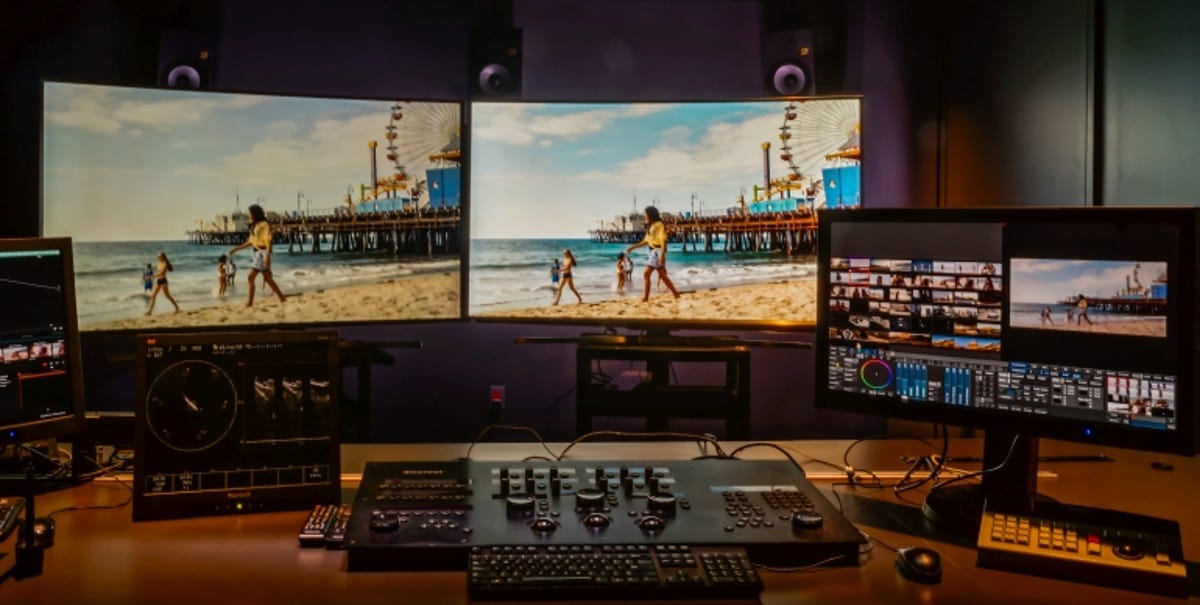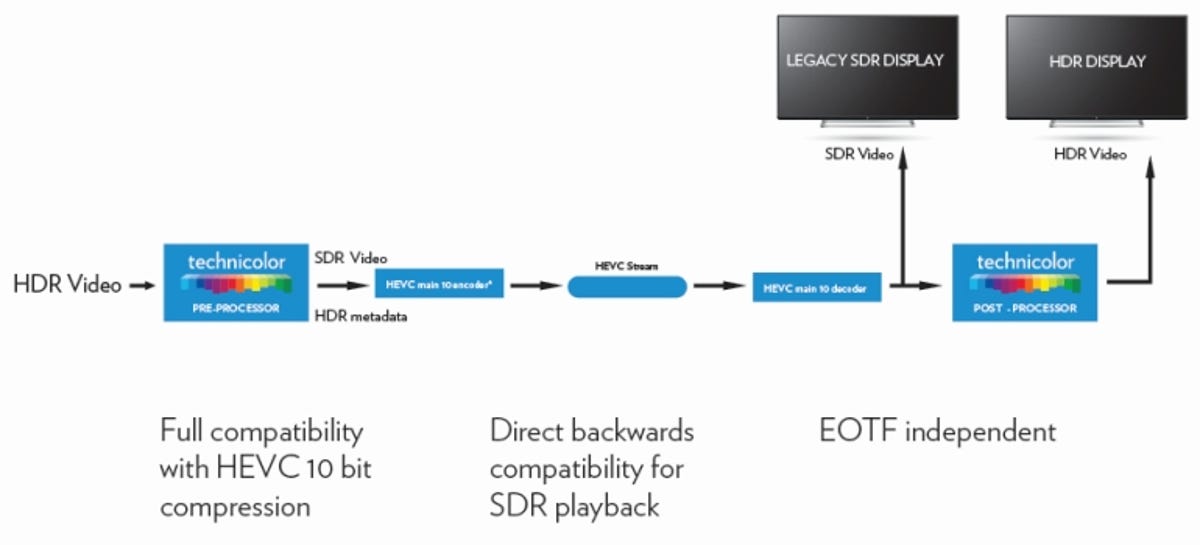
Technicolor
Dolby has gotten the most press when it comes to high dynamic range ( HDR), widely seen as the next generation of home video content after 4K. The company has been been making a big push for several years with its Dolby Vision HDR format, but it’s not the only one in the game.
Technicolor, a company known best for film but which also plays a part in numerous digital media and entertainment technologies, has its own HDR format in the works. It’s one of the options on Ultra HD 4K Blu-ray, due out later this year.
How is Technicolor’s offering different from Dolby Vision, and what does it mean for HDR and you? Read on.
HDR so far
Related stories
- HDR for photography vs. HDR for TVs: What’s the difference?
- High Dynamic Range arrives
- High Dynamic Range: Dolby Vision, X-tended Dynamic Range Pro, and beyond
- ‘Tomorrowland’ in Dolby Cinema: the best picture I’ve seen in a theater
If you’re not familiar with HDR for home video — not to be confused with HDR found on your phone’s camera — here’s a brief recap.
Certain high-end TVs this year, and likely even more next year, have the ability to improve contrast by making bright parts of the picture even brighter. It’s like a more intense version of local dimming, and in demos we’ve seen delivers a more obvious picture quality improvement than the bump in resolution from HD to 4K.
What these TVs need to really take advantage of this potential, however, is content. The first examples of HDR-enabled home video content, either from streaming services like Amazon or Netflix, or on the upcoming Ultra HD 4K Blu-ray, is coming this year.
Amazon is currently the only provider of HDR home video, and it’s currently exclusive to Samsung SUHD TVs and only available on a couple of shows. In CNET’s initial tests with Samsung’s UNJU8500 HDR-capable TV, the results were underwhelming compared to those demos, an indication that HDR is subject to early-generation issues. But its potential is still very exciting.
Technicolor’s HDR upconversion
Technicolor is one of the big behind-the-scenes names in Hollywood. It helps make the movies you see look pretty, among other things.
One of the biggest tools Technicolor is offering, and also perhaps most controversial, is a method for making regular standard dynamic range (SDR) content more like HDR. It’s called “Intelligent Tone Management” and it will “give broadcasters and content owners new options for efficiently producing HDR content by analyzing video content in real time and providing colorists with direct control of luminance in the shadows, mid-tones and highlights for an unparalleled level of control for grading both HDR and SDR legacy content.”
Think of this as a sort of upconversion process to make more HDR content available.
The process could add some pop to current content, but it also has the potential for abuse. Many early 4K movies available for download were merely upconverted 1080p movies, for example. 2D-to-3D conversions in Hollywood have been rife with over-the-top effects, almost universally poorly done and rightly derided.
That concern aside, a little extra pop couldn’t hurt, but how good this looks (compared to non-adjusted versions, or true HDR) remains to be seen.
Technicolor sees this more for use by broadcasters for live events, sitcoms and perhaps lower-budget shows that want to look a little better. They also say that the initial reactions they’ve gotten from have been very positive, especially about the extra detail possible in shadows, and the additional color palette ( thanks to P3).
Technical details: True HDR to your screen
Upconversion is one thing, but Technicolor has also developed a method for delivering true HDR content. The encoding process is a little different than you might expect. It starts with actual 10-bit HDR content from a Hollywood-level camera. The encoder then converts the HDR to 8-bit SDR, and spits out a single stream that includes SDR video and HDR metadata.


Technicolor
Metadata isn’t actual video; instead it’s additional information that rides along with the video signal. The main benefit is to save bandwidth. When played back by a compatible decoder, this metadata allows the full HDR image to be re-created by the TV.
What this means is that there’s just that one stream. Non-HDR displays will ignore the metadata and just show the SDR image.
Technicolor has already demonstrated, with Sinclair Broadcast Group, that it’s possible to send this HDR method over the air. According to the companies, “The series of broadcasts, integrated into Sinclair’s experimental OFDM transmission system and transmitted under real-world conditions outside of a laboratory, delivered high quality HDR content broadcast at HD and 4K/UHD resolutions in a single layer with backwards-compatible standard dynamic range. Both HDR and legacy devices, including fixed position TVs and mobile devices, were all able to receive and display the broadcast signal.”
What this means for you
Technicolor boasts that its is an open standard, while Dolby’s is not. To you, the end user, this matters little. With any luck, TVs and playback devices of the future will be able to read and understand both HDR methods, and any other HDR format that comes down the pike, and your experience will be seamless.
In the worst case scenario there will be an HDR format war that plays out in the consumer marketplace, similar to Blu-ray vs. HD-DVD, where certain TVs will only play back certain HDR formats. I see this as unlikely, as manufacturers have learned (the hard way) that we all hate when that happens.
Then again, Vizio is already talking up the Reference Series as the only TV to handle Dolby Vision, so the seeds of war may have already started being sewn.
As Ultra HD Blu-ray and more HDR content (and TVs) roll out this year and next, we’ll see how this all plays out. In the meantime, we definitely don’t consider HDR a must-have feature on a TV bought today. After all, there’s barely any standard dynamic range 4K content available now.
Got a question for Geoff? First, check out all the other articles he’s written on topics such as why all HDMI cables are the same, LED LCD vs. OLED vs. Plasma, why 4K TVs aren’t worth it and more. Still have a question? Send him an email! He won’t tell you what TV to buy, but he might use your letter in a future article. You can also send him a message on Twitter @TechWriterGeoff or Google+.




